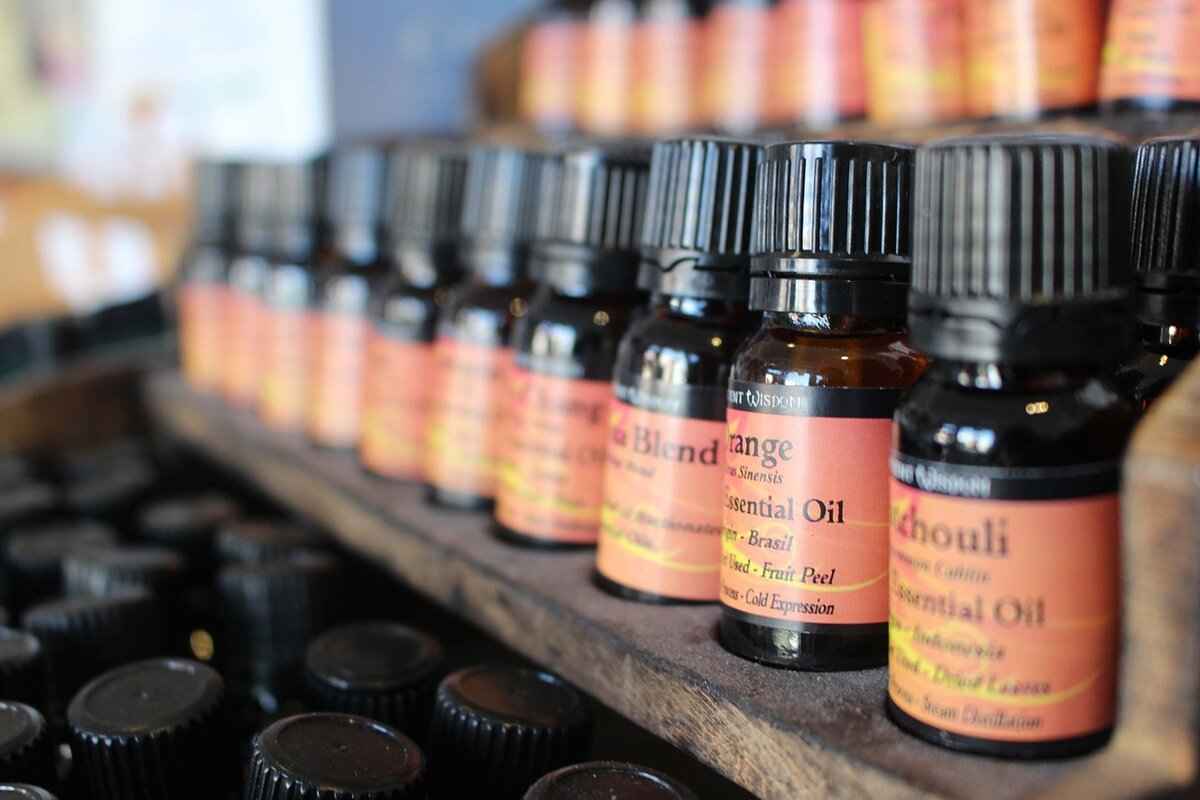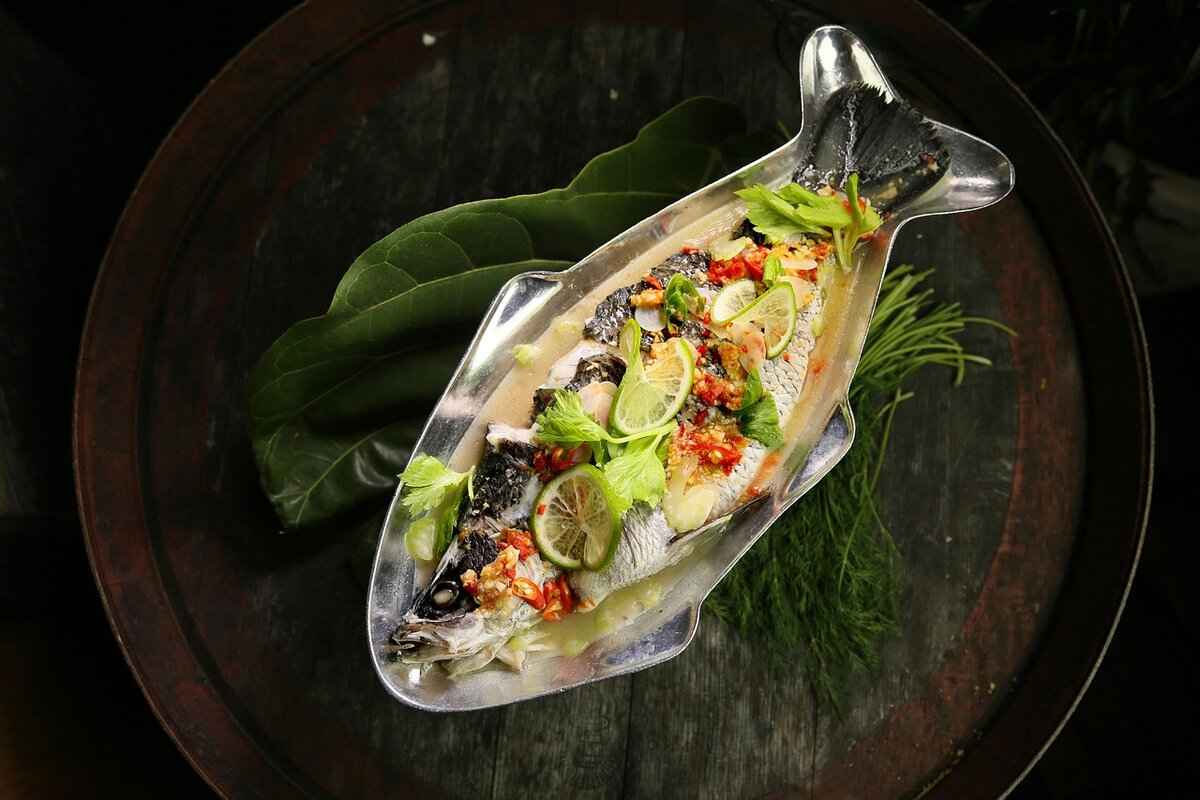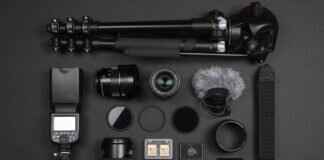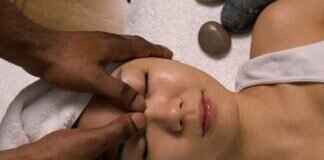This article delves into the fascinating world of Asian massage styles, offering insights into their unique techniques, profound benefits, and rich cultural significance. By examining these therapeutic practices, readers will gain a comprehensive understanding of how they can enhance both physical and mental well-being.
- Thai Massage: This ancient practice integrates acupressure and yoga-like stretching, promoting energy flow and flexibility.
- Shiatsu: A Japanese technique that utilizes finger pressure on energy points to stimulate healing and relaxation.
- Tui Na: A traditional Chinese massage that combines acupressure with manipulation to address various health issues.
Asian massage encompasses a diverse range of techniques, each with its own characteristics and cultural roots. For instance, Thai massage is characterized by dynamic movements and stretches, while Shiatsu focuses on pressure application to specific points. Tui Na, on the other hand, emphasizes manipulation to restore balance within the body.
Thai massage is renowned for its holistic approach, combining elements of yoga and acupressure. Practitioners use their hands, feet, and even elbows to apply pressure along energy lines, enhancing circulation and promoting relaxation. This method not only alleviates physical tension but also helps in balancing the body’s energy.
Rooted in ancient Buddhist teachings, Thai massage emphasizes the interconnectedness of body and mind. It aims to harmonize physical and spiritual health, fostering a sense of well-being that transcends mere physical relief.
Essential techniques include rhythmic compression and assisted yoga postures, which enhance flexibility and relieve muscle tension. These methods encourage a deep sense of relaxation while improving overall body function.
Regular sessions of Thai massage can lead to numerous health benefits, such as:
- Improved circulation
- Reduced stress levels
- Enhanced mobility and flexibility
Shiatsu is a deeply therapeutic Japanese massage technique that employs finger pressure to stimulate energy points throughout the body. This method is based on the principles of traditional Chinese medicine, aiming to restore balance and promote healing.
Shiatsu is particularly effective in relieving pain and promoting relaxation. Benefits include:
- Stress reduction
- Improved sleep quality
- Enhanced emotional well-being
Shiatsu techniques include the use of palm and thumb pressure, which effectively target various ailments by stimulating the body’s natural healing processes.
Tui Na stands out among Asian massage styles due to its unique combination of acupressure and manipulation techniques. This method is particularly effective for treating musculoskeletal issues and promoting overall health.
Acupressure is a cornerstone of Tui Na, focusing on energy meridians to alleviate pain and promote healing. By applying pressure to specific points, practitioners can help restore balance and enhance the body’s natural healing capabilities.
Tui Na offers numerous health benefits, including:
- Effective pain relief
- Improved digestion
- Enhanced overall vitality
Selecting the appropriate massage style depends on individual needs and preferences. Consider your desired outcomes, whether you seek relaxation, pain relief, or increased flexibility, to choose the right Asian massage that aligns with your personal comfort.

What Are the Different Types of Asian Massage?
Asian massage is a rich tapestry of therapeutic techniques, each offering unique benefits and cultural significance. Understanding the different types of Asian massage can help individuals select the most suitable style for their needs. This section provides an overview of popular styles, including Thai, Shiatsu, and Tui Na, along with their origins and primary methods.
- Thai Massage
- Origin: Rooted in ancient healing traditions influenced by Indian and Buddhist practices.
- Techniques: Combines acupressure with yoga-like stretches, focusing on energy lines in the body called “Sen.” The practitioner uses their hands, feet, and body weight to perform rhythmic compressions and stretches.
- Shiatsu
- Origin: Developed in Japan, Shiatsu is based on traditional Chinese medicine principles.
- Techniques: Utilizes finger pressure on specific points along the body’s meridians to stimulate energy flow. Shiatsu practitioners also incorporate stretches and joint rotations to enhance relaxation and mobility.
- Tui Na
- Origin: A traditional Chinese therapeutic massage with a history spanning thousands of years.
- Techniques: Involves various hand techniques, including kneading, rolling, and pressing, targeting acupressure points and meridians to balance the body’s energy and promote healing.
Each of these massage styles not only provides physical benefits but also embodies the cultural philosophies and healing practices of their respective origins. By exploring these techniques, individuals can find the massage style that resonates with their personal wellness journey.

Understanding Thai Massage Techniques
is essential for anyone interested in holistic health and wellness. This ancient practice, which has roots in Buddhist teachings, merges elements of acupressure and yoga-like stretching to create a unique and therapeutic experience.
Thai massage is often referred to as “the art of healing” due to its focus on energy flow within the body. Practitioners believe that by applying pressure to specific points, known as “Sen” lines, they can help to release blockages and promote a sense of well-being. The techniques used in Thai massage are designed to enhance flexibility, relieve tension, and improve overall circulation.
- Traditional Practices: Thai massage is performed on a mat on the floor, allowing the therapist to use their body weight effectively. The client remains fully clothed in loose-fitting attire, which facilitates movement and stretching.
- Yoga-like Stretching: The massage incorporates a series of assisted stretches that are reminiscent of yoga poses. This not only increases flexibility but also helps to realign the body.
- Rhythmic Compression: Practitioners use their palms, thumbs, elbows, and feet to apply rhythmic pressure along the body’s energy lines, promoting relaxation and reducing muscle tension.
The benefits of Thai massage extend beyond relaxation. Regular sessions can lead to improved posture, enhanced mobility, and a significant reduction in stress levels. Many individuals report feeling more energized and focused after a session, highlighting the practice’s ability to rejuvenate both body and mind.
In summary, Thai massage is not just a physical treatment; it is a holistic approach to health that emphasizes the interconnectedness of body, mind, and spirit. By integrating traditional techniques with a focus on energy flow, it offers a comprehensive method for achieving overall well-being.
The Philosophy Behind Thai Massage
delves into the profound roots of this ancient practice, which is deeply embedded in the teachings of Buddhism. Thai massage is not merely a physical treatment; it embodies a holistic approach that integrates the body, mind, and spirit. This unique perspective emphasizes the importance of achieving harmony within oneself, promoting both physical well-being and spiritual balance.
At the heart of Thai massage lies the concept of energy flow, often referred to as “Sen” lines, which are akin to the meridians used in Traditional Chinese Medicine. Practitioners believe that blockages in these energy pathways can lead to physical and emotional distress. Therefore, the goal of Thai massage is to release these blockages, facilitating a smoother flow of energy throughout the body.
In addition to its focus on energy, Thai massage incorporates elements of mindfulness and meditation. Each session is designed to be a transformative experience, allowing individuals to reconnect with their inner selves. The use of rhythmic pressure and stretching techniques not only enhances flexibility but also fosters a deep sense of relaxation and mental clarity.
Moreover, Thai massage encourages practitioners and recipients alike to cultivate a greater awareness of their bodies. This heightened consciousness can lead to improved posture, reduced stress levels, and a more profound understanding of personal health. By nurturing this connection, individuals can better manage their physical ailments and emotional challenges.
In summary, the philosophy behind Thai massage transcends mere physical manipulation. It is a comprehensive practice that seeks to harmonize the body and mind, offering a pathway to holistic health and wellness. Through its ancient techniques, Thai massage serves as a reminder of the intricate relationship between our physical state and emotional well-being.
Key Techniques in Thai Massage
Thai massage, a unique blend of ancient traditions and modern practices, incorporates a variety of techniques aimed at enhancing physical and mental well-being. This subsection focuses on the key techniques that define Thai massage, emphasizing their roles in improving flexibility and relieving tension.
- Rhythmic Compression: This technique involves applying pressure to specific points on the body in a rhythmic manner. It stimulates blood circulation and helps release muscle tension, promoting relaxation and a sense of calm.
- Assisted Yoga Postures: Thai massage practitioners often guide clients through various yoga-like stretches. These postures enhance flexibility and range of motion, allowing the body to move more freely and reducing the risk of injury.
- Gentle Rocking Movements: By gently rocking the body, therapists can help release pent-up tension and encourage a deeper state of relaxation. This technique also aids in realigning the body’s energy flow.
- Acupressure: Similar to acupuncture but without needles, acupressure involves applying pressure to specific energy points. This technique is believed to unblock energy pathways, aiding in pain relief and promoting overall health.
Each of these techniques plays a vital role in the holistic approach of Thai massage. By integrating rhythmic compression and assisted yoga postures, practitioners create a comprehensive experience that not only addresses physical discomfort but also fosters mental clarity. The combination of these methods allows for a deeper connection between body and mind, enhancing the overall therapeutic effect.
Moreover, the emphasis on breath control during sessions helps individuals to relax further and become more aware of their bodies. This mindfulness aspect of Thai massage encourages a greater understanding of personal physical limits and promotes long-term wellness.
In summary, the key techniques in Thai massage work synergistically to enhance flexibility, relieve tension, and promote a profound sense of well-being, making it a valuable practice for individuals seeking holistic health solutions.
Health Benefits of Thai Massage
Thai massage is a unique blend of physical and spiritual practices that offers a plethora of health benefits. This traditional technique, deeply rooted in ancient Thai culture, is not just about relaxation; it plays a crucial role in enhancing overall well-being. Below, we explore the various health benefits associated with regular Thai massage sessions, highlighting specific conditions that can be alleviated.
- Improved Circulation: Thai massage employs rhythmic compression and stretching techniques that stimulate blood flow. This is particularly beneficial for individuals with poor circulation, as it helps deliver oxygen and nutrients more efficiently throughout the body.
- Stress Reduction: The holistic approach of Thai massage encourages relaxation and mental clarity. By alleviating physical tension, it can significantly reduce stress levels, making it an effective remedy for anxiety and depression.
- Enhanced Mobility: Through a series of gentle stretches and yoga-like postures, Thai massage promotes flexibility and range of motion in the joints. This is especially advantageous for athletes or those recovering from injuries.
- Pain Relief: Regular sessions can help alleviate chronic pain conditions such as migraines, arthritis, and lower back pain. The acupressure techniques used in Thai massage target specific pain points, providing immediate relief.
- Improved Digestion: The manipulation of pressure points can also enhance digestive health. Thai massage can stimulate the internal organs, aiding in digestion and reducing issues such as bloating and constipation.
- Boosted Immune System: By promoting relaxation and reducing stress, Thai massage can improve immune function. This helps the body fend off illnesses and maintain overall health.
In summary, the benefits of Thai massage extend far beyond relaxation. By addressing both physical and mental health, it provides a comprehensive approach to well-being. Regular sessions can lead to significant improvements in various health conditions, making it a valuable addition to any wellness routine.
Shiatsu: The Art of Japanese Massage
Shiatsu is a traditional Japanese massage technique that focuses on applying finger pressure to specific energy points throughout the body. Rooted in ancient Chinese medicine, Shiatsu emphasizes the flow of Qi (energy) and aims to restore balance within the body. This practice is not merely a physical treatment; it embodies a holistic approach that considers the interconnectedness of body, mind, and spirit.
The foundational principles of Shiatsu are based on the concept of meridians, which are pathways that carry energy throughout the body. By targeting these meridians, Shiatsu practitioners can help alleviate a variety of ailments, including chronic pain, stress, and fatigue. The gentle yet firm pressure applied during a session helps to release tension, promote relaxation, and enhance overall well-being.
One of the key therapeutic effects of Shiatsu is its ability to improve circulation. As pressure is applied to specific points, blood flow increases, delivering essential nutrients and oxygen to the tissues. This enhanced circulation can lead to a reduction in muscle stiffness and an overall sense of vitality.
Additionally, Shiatsu is known for its effectiveness in promoting emotional balance. Many individuals report feeling a profound sense of relaxation and mental clarity following a session. This emotional release is vital in today’s fast-paced world, where stress and anxiety can take a toll on mental health.
Shiatsu also incorporates stretching techniques, which can improve flexibility and range of motion. Practitioners often use their palms, thumbs, elbows, and even feet to apply pressure, ensuring a comprehensive treatment that addresses both physical and energetic imbalances.
Overall, Shiatsu is a powerful therapeutic practice that not only addresses physical discomfort but also nurtures emotional and spiritual health, making it a valuable addition to any wellness routine.

Exploring the Benefits of Shiatsu
Shiatsu, a traditional Japanese massage technique, is renowned for its profound ability to relieve pain and promote relaxation. This ancient practice employs finger pressure on specific energy points, known as acupressure points, which are believed to enhance the body’s natural healing processes. The following sections delve into the various health benefits associated with Shiatsu, highlighting its effectiveness in stress reduction and improving sleep quality.
- Stress Reduction: One of the primary benefits of Shiatsu is its remarkable ability to mitigate stress. By applying pressure to key points in the body, Shiatsu can help release tension, leading to a profound sense of relaxation. This is particularly beneficial in today’s fast-paced world, where stress can accumulate and adversely affect mental and physical health.
- Improved Sleep Quality: Many individuals who experience insomnia or disrupted sleep patterns have found relief through Shiatsu. The relaxation induced by this massage technique can help calm the mind and body, making it easier to fall asleep and stay asleep. Studies suggest that regular Shiatsu sessions may contribute to more restorative sleep.
- Pain Relief: Shiatsu is also effective in alleviating various types of pain, including headaches, back pain, and joint discomfort. By targeting specific acupressure points, Shiatsu can enhance circulation and reduce inflammation, providing a natural alternative to pain relief.
- Enhanced Emotional Well-being: The holistic approach of Shiatsu not only addresses physical ailments but also supports emotional health. Many practitioners report feeling a greater sense of balance and emotional stability after sessions, making it a valuable tool for mental wellness.
In summary, Shiatsu offers a multitude of health benefits that extend beyond mere relaxation. Its ability to reduce stress, improve sleep quality, and alleviate pain makes it a compelling choice for anyone seeking an effective and holistic approach to health and well-being. Whether you are dealing with chronic stress or simply looking to enhance your overall quality of life, Shiatsu may provide the relief you need.
Shiatsu Techniques and Practices
Shiatsu, a traditional Japanese massage technique, employs a variety of methods that are essential for its effectiveness in promoting health and well-being. This subsection delves into the key techniques utilized in Shiatsu, highlighting their significance in treating various ailments and enhancing overall wellness.
One of the primary techniques in Shiatsu is palm pressure, which involves using the palms of the hands to apply sustained pressure to specific points on the body. This method is particularly effective for releasing tension and improving blood circulation. By focusing on the body’s energy pathways, or meridians, practitioners can help restore balance and promote healing.
Another vital technique is thumb pressure, where the thumbs are used to target acupressure points with precision. This technique allows for deeper penetration into muscle tissues, making it effective for alleviating pain and stiffness in areas such as the back, neck, and shoulders. The use of thumb pressure is often combined with stretching movements to enhance flexibility and relieve muscle tightness.
Shiatsu also incorporates stretching techniques, which are designed to improve mobility and flexibility. These stretches are performed passively, where the practitioner guides the client’s body into various positions. This not only helps in loosening tight muscles but also promotes relaxation and a sense of well-being.
In addition to these techniques, Shiatsu practitioners often utilize breathing exercises to enhance the effectiveness of the massage. Deep, mindful breathing helps clients to relax and allows energy to flow more freely throughout the body. This holistic approach not only addresses physical ailments but also encourages mental and emotional balance.
Overall, the combination of palm and thumb pressure, stretching, and breathing techniques in Shiatsu creates a comprehensive therapeutic experience. These methods work synergistically to alleviate a variety of conditions, including stress, anxiety, and chronic pain, making Shiatsu a valuable practice in the realm of holistic health.
Comparing Tui Na to Other Asian Massage Styles
Tui Na, a traditional Chinese therapeutic massage, is renowned for its unique blend of acupressure and manipulation. Unlike other Asian massage styles, Tui Na focuses on the body’s energy pathways, or meridians, to promote healing and balance. This section delves into how Tui Na differentiates itself from popular techniques like Thai and Shiatsu, highlighting its distinctive approaches and applications.
Unique Techniques of Tui Na
- Manipulation and Stretching: Tui Na employs a variety of hand techniques, including kneading, rolling, and pulling, to manipulate muscles and joints, enhancing flexibility and relieving tension.
- Acupressure Focus: Central to Tui Na is the application of pressure on specific acupoints, which helps to unblock energy flow and alleviate pain, making it particularly effective for chronic conditions.
- Holistic Approach: Tui Na not only addresses physical ailments but also considers emotional and mental well-being, aligning with traditional Chinese medicine principles.
Comparative Analysis with Thai and Shiatsu
While Thai massage incorporates yoga-like stretches and rhythmic pressure techniques, Tui Na is more focused on direct manipulation and acupressure. This makes Tui Na particularly beneficial for those seeking targeted pain relief. On the other hand, Shiatsu utilizes finger pressure on energy points similar to Tui Na, but it often emphasizes a more gentle approach, relying on the practitioner’s body weight rather than vigorous techniques.
Applications and Benefits
Tui Na is highly versatile, effectively treating a range of conditions, from musculoskeletal issues to digestive disorders. Its unique combination of techniques allows for a tailored approach to individual needs, making it a valuable option for anyone exploring Asian massage therapies.

The Role of Acupressure in Tui Na
Acupressure plays a crucial role in the practice of Tui Na, a traditional Chinese therapeutic massage technique that utilizes the principles of Traditional Chinese Medicine (TCM). By focusing on energy meridians—pathways through which vital energy, or Qi, flows—acupressure aims to restore balance and promote healing within the body.
In Tui Na, practitioners apply pressure to specific acupressure points to alleviate pain and enhance overall wellness. These points correspond to various organs and systems within the body, allowing for targeted treatment of health issues. For instance, applying pressure to the LI4 point, located between the thumb and index finger, is known to relieve headaches and improve immune function.
The technique involves various hand movements, including kneading, rolling, and pressing, which stimulate the flow of Qi. This stimulation can help release muscle tension, improve circulation, and promote relaxation. The effectiveness of acupressure in Tui Na is attributed to its ability to activate the body’s natural healing mechanisms, making it a popular choice for those seeking relief from chronic pain or stress-related conditions.
Moreover, acupressure is not only limited to physical ailments. It also addresses emotional and mental health challenges, such as anxiety and depression. By balancing the body’s energy, individuals often experience improved emotional stability and a greater sense of well-being.
In summary, the role of acupressure in Tui Na is integral to its effectiveness as a healing modality. By understanding and utilizing acupressure points, practitioners can provide comprehensive care that addresses both physical and emotional health, offering a holistic approach to wellness.
Benefits of Tui Na Massage
Tui Na, a traditional Chinese therapeutic massage, is renowned for its multifaceted health benefits. This ancient practice employs a combination of acupressure, manipulation, and various hand techniques to promote healing and balance within the body. Below, we explore the specific conditions that Tui Na can effectively address through its targeted techniques.
- Pain Relief: Tui Na is particularly effective in alleviating chronic pain conditions such as lower back pain, neck stiffness, and joint pain. The application of pressure on specific acupressure points helps to release tension and improve circulation.
- Improved Digestion: The massage techniques used in Tui Na can stimulate the digestive system, making it beneficial for individuals suffering from indigestion, constipation, or irritable bowel syndrome (IBS). By enhancing the flow of energy in the digestive organs, Tui Na promotes overall digestive health.
- Stress Reduction: Regular sessions of Tui Na can significantly lower stress levels. The massage encourages relaxation and helps to balance the body’s energy, which can lead to improved mental clarity and emotional stability.
- Enhanced Mobility: Tui Na is known for its ability to improve flexibility and range of motion. It is particularly beneficial for athletes or individuals recovering from injuries, as it helps to restore function and prevent future injuries.
- Boosted Immune System: By promoting better circulation and lymphatic drainage, Tui Na can enhance the immune response, helping the body to fight off illnesses more effectively.
In conclusion, Tui Na serves as a holistic approach to health, addressing a wide array of physical and emotional conditions. Its unique blend of techniques not only targets specific ailments but also promotes overall well-being, making it a valuable addition to any health regimen.
Choosing the Right Asian Massage Style for You
Choosing the right Asian massage style can significantly enhance your overall wellness experience. With various techniques available, it is essential to consider your individual needs and preferences before making a decision. This section aims to guide you through the process of selecting the most suitable massage style based on your desired outcomes and comfort levels.
- Identify Your Goals: Start by determining what you hope to achieve from your massage. Are you looking for relaxation, pain relief, or improved mobility? Different styles cater to different needs, so understanding your goals is crucial.
- Consider Your Comfort: Personal comfort is paramount when choosing a massage style. Some individuals may prefer deep pressure techniques, while others may find gentler approaches more appealing. Think about your pain threshold and past experiences with massage.
- Research Various Techniques: Familiarize yourself with popular Asian massage styles such as Thai, Shiatsu, and Tui Na. Each of these styles has unique methods and benefits, so understanding their characteristics can help you make an informed choice.
- Consult with Professionals: If you’re unsure about which style to choose, consider consulting a licensed massage therapist. They can provide personalized recommendations based on your health history and specific concerns.
- Trial and Feedback: Don’t hesitate to try a session of different styles. Personal experience is invaluable, and you can gauge how each technique resonates with your body. After each session, take note of how you feel and whether the massage met your expectations.
By following these guidelines, you can navigate the diverse world of Asian massage styles more effectively. Remember that the right choice is a personal journey, and what works for one person may not work for another. Listening to your body and prioritizing your comfort will lead you to the most beneficial massage experience.
Frequently Asked Questions
- What is the difference between Thai, Shiatsu, and Tui Na massage?
Each of these massage styles has unique techniques and philosophies. Thai massage combines acupressure with yoga-like stretches, focusing on energy flow. Shiatsu uses finger pressure on specific points to stimulate energy and promote relaxation. Tui Na, on the other hand, blends acupressure with manipulation, targeting meridians to alleviate pain and improve health.
- How often should I get a massage for optimal benefits?
The frequency of massages depends on your personal needs and goals. For general wellness, a monthly session might be perfect. However, if you’re addressing specific issues like stress or chronic pain, weekly sessions can yield better results. It’s all about finding what works best for you!
- Can Asian massage styles help with stress relief?
Absolutely! Both Shiatsu and Thai massage are renowned for their stress-relieving properties. They not only help relax tense muscles but also promote a sense of well-being through their holistic approaches. Think of it as a mini-vacation for your mind and body!
- Is there a specific massage style that is better for pain relief?
While all three styles can be effective, Tui Na is particularly known for its ability to target pain through acupressure techniques. It’s like having a skilled mechanic working out the kinks in your body, helping you feel rejuvenated and pain-free.














